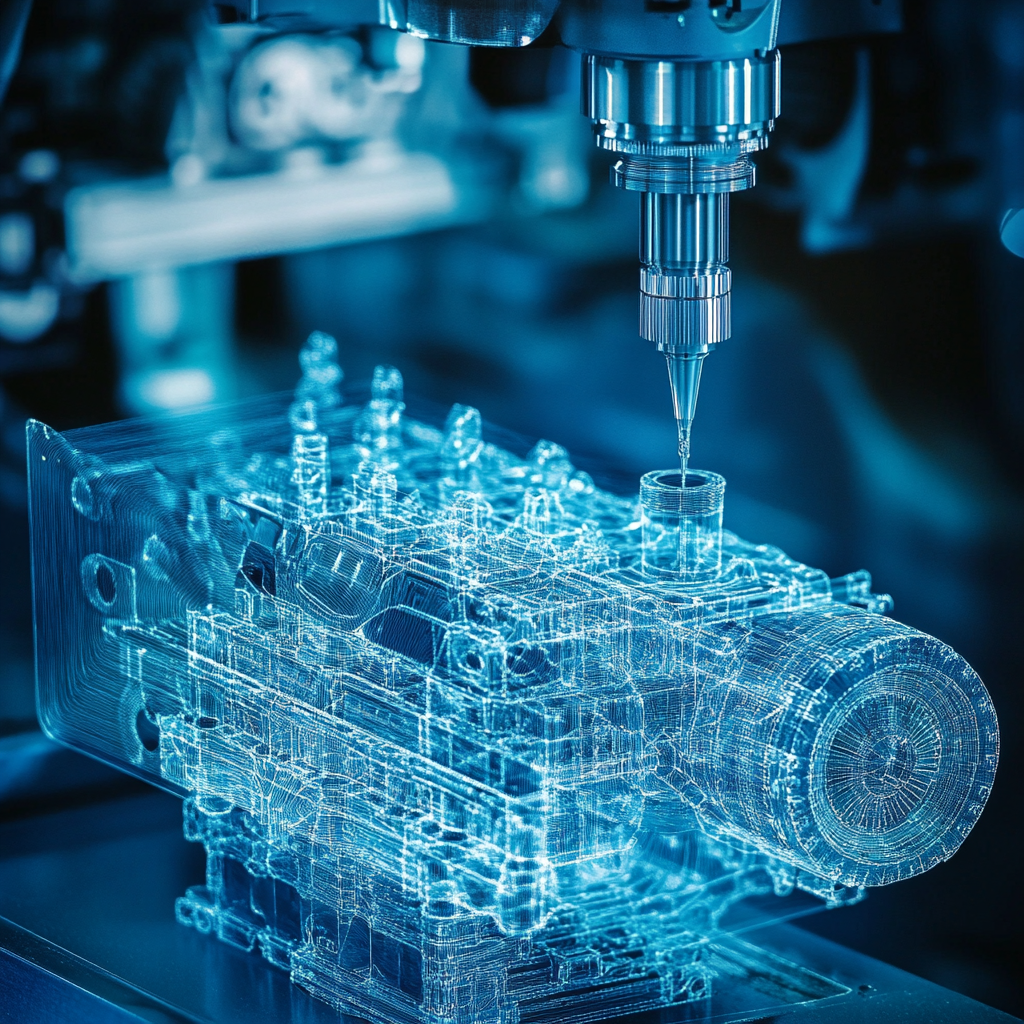CAD Strategies Used by CAD / CAM S10 CAD Tips from Our Experts at CAD/CAM Serviceservices

Creating professional engineering drawings in CAD is hardly an easy task. We know how much experience and knowledge has to go into every drawing, and we’re here to help. Our outsource engineers have created millions of CAD drawings over the past decades, so we know this space inside and out.
In this guide, our CAD experts at CAD/CAM Services are offering 10 CAD tips. These are useful for almost any engineer or manager, regardless of your industry or application.
Don’t Forget to Train Your Staff
Training is one of the best ways to update your staff and increase your production. In the world of 3D CAD, there are so many buttons and features that the everyday engineer doesn’t know about. These functions could save a lot of time during each project, which is why training is so great.
We suggest bringing in a CAD expert to train your staff, but you can also go down the DIY route and watch YouTube videos and go through training courses built into CAD programs like Inventor, SolidWorks, and NX.
Splurge on Higher-End Computers
When it comes to computing power, don’t be afraid to pay for the more advanced option. This might seem like a waste of money, but it’s actually the opposite — with a stronger PC, you can handle more intricate 3D CAD models and perform detailed simulations and analyses.
With slower computers, 3D CAD work can get tough with the constant lag and crashes. This will hurt your staff’s morale and can make every project last longer.
Now, we’re not suggesting that you buy a supercomputer to run CAD, but you should certainly have strong enough computers that can do 3D modeling without any issues.
Consider Adding Simulation Licenses for Your CAD Software
Speaking of simulations and analyses, you should see what options you have available in your current CAD license. Looking at CATIA, for example, you can buy different tiers of the software. Spending more money unlocks simulations and added functionality that the base-level package doesn’t.
In a lot of cases, these more expensive CAD packages allow you to perform detailed FEA and simulations. A single FEA can make up for the money you spent, since you’ll find issues in your design and optimize the overall size before production even starts.
Simulation licenses can also allow you to tackle larger and more complicated projects. This translates to more money in your pocket and more production power in your operations areas.

A pair of engineers go through a peer-review process before finalizing their CAD design.
Encourage Collaboration and Peer Reviews
One of the best tips for better CAD models is to go through peer reviews and collaborate on each design. If your engineering team has more than one person in it, then you should highly encourage peer reviews.
Why? Because peer reviews can spot issues and potential problems that the initial designer didn’t think of. This doesn’t mean that the designer is bad at their job — there are just so many things to consider during even a simple bracket design, it’s easy to forget a small detail.
Collaboration allows each worker to utilize their work history to optimize the design. Who knows, maybe there’s an off-the-shelf solution that has a shorter lead time and costs less than your custom part?
Whenever we publish a design at CAD/CAM Services, we go through a series of peer reviews to make sure everything is perfect. More often than not, there’s a tiny detail that needs to be refined before the drawing can be finalized — a detail that would otherwise be missed if we skipped this added review.
Practice, Practice, Practice
Without a doubt, the best way to get better at CAD is to practice. It’s tough to find time to practice, especially during a busy season at work, but it’s critical. One way to practice is through the training we mentioned earlier, but another option is to just open the CAD program and mess around. Make mock models and try different commands to see how they work.
Our expert engineers with decades of experience always say that the best way to get better at any CAD program is to practice.
As a manager, maybe you can schedule a few hours a week of paid time for your team to practice in CAD and get excited about learning new commands.

A full-time engineer is practicing different shortcuts to streamline their CAD design.
Learn the Shortcuts
Every CAD program has a number of shortcuts. A shortcut is either a letter or word you can type on your keyboard, or a button somewhere on the screen that performs the function faster than another method.
A simple example is making a sketch on NX. You could find and click the circle button, then find and click the Finish button, or you can type “O” and then right click. This very simple example just saved you a few seconds. More nuanced examples can save minutes, and all of this time adds up. Multiply this time savings by how many engineers you have and how many hours are worked a year, and you’ll be surprised how great these shortcuts really are.
When someone on your team finds a neat shortcut, they should share it with everyone else to multiply the time savings across the team.
Consider Trips to Your Local Machine Shop for Further Learning
There’s no way to be a successful engineer without knowing a ton about machining, assuming you’re designing for manufacturing (which means making parts that will later be fabricated in a machine shop or fab lab). How can you learn more about machining? By visiting a local machine shop and learning from the experts who run the CNC machines there.
These visits should teach you more about the limitations of CNC machines and what can physically be made. We encourage engineers to take their drawing plans to the machine shop of their choice, and ask the machinist how they will make the part, what parts will be difficult to make, and how the machinist would simplify the drawing in the future.
This will dramatically shift how you design parts. Approaching each model from a machining perspective will result in fewer headaches, less money wasted, and quicker turnaround times during fabrication.
Use Your 2D Drawings to Build the Part in Your Mind
One way to step into a machinist’s shoes is to look at your 2D drawings and try building the part in your mind, only using the dimensions and notes on the page.
This is a great way to see if you’re missing dimensions or if anything isn’t clear. With more experienced engineers, you might think about what machine will make the part and imagine you’re using that machine to try to build your piece.

An engineer using advanced technology to improve their CAD results.
Always Consider the Newest Tech and Best Practices
As a company, you’re likely staying up-to-date with the newest technology on the warehouse floor, but what about in the engineering office? Updating the technology that your CAD specialists use is another great way to improve efficiency, just like upgrading the tech in your operations area.
What kind of tech are we talking about? Some options are ergonomic keyboards, computer mice made specifically for 3D modeling, or a VR setup for drafting (if it helps in your application).
As far as best practices, those are always changing as methods mature and experts talk to one another. To implement new best practices, it’s best to chat with other engineers and draftsmen to hear the newest methods.
Keep it as Simple as Possible
If you want to maximize your efficiency, save money, and save time on every part, there’s a simple tip to help: keep it as simple as possible.
Engineers are tempted to overcomplicate parts to add more features and functions, but are these extra features necessary or just “wants”? A simple part is significantly less expensive and quicker to make than a complicated one. Do these added features justify the added cost and time to make?
How can you simplify a design? Here are some simple ideas:
- Use nominal sizes (i.e. 1/2”, 7/8”, 5/64”, 3/16”)
- Stick to readily available materials and material sizes
- Minimize the work that needs to be done to the raw material
- Use off-the-shelf components to replace custom components
- Make your tolerances as loose as possible
- Skip finishing steps unless they’re needed (i.e. powder coating, polishing, sandblasting)
Conclusion
You just learned 10 expert CAD tips that should speed up your work and yield better results. Our CAD experts at CAD/CAM Services have made millions of drawings over the past decades, and our team is one of the most efficient outsourced engineering teams around. If you want CAD Perfect results, you can outsource the work to us and save time and money during the process. Get a free quote today.
Recent Posts


5 Common CAD Mistakes and How to Avoid Them
We came up with 5 common issues that we see, and our expert advice when it comes to avoiding these issues.

Techniques to Save Money on Manufacturing Your 3D CAD Model
Our team of outsourced CAD experts wants to talk about ways that your engineering team can save money on manufacturing with each 3D CAD model in 2024.

Shortcuts to Save Time on CAD Conversions
a quick tip to save money on each of your CAD conversions
